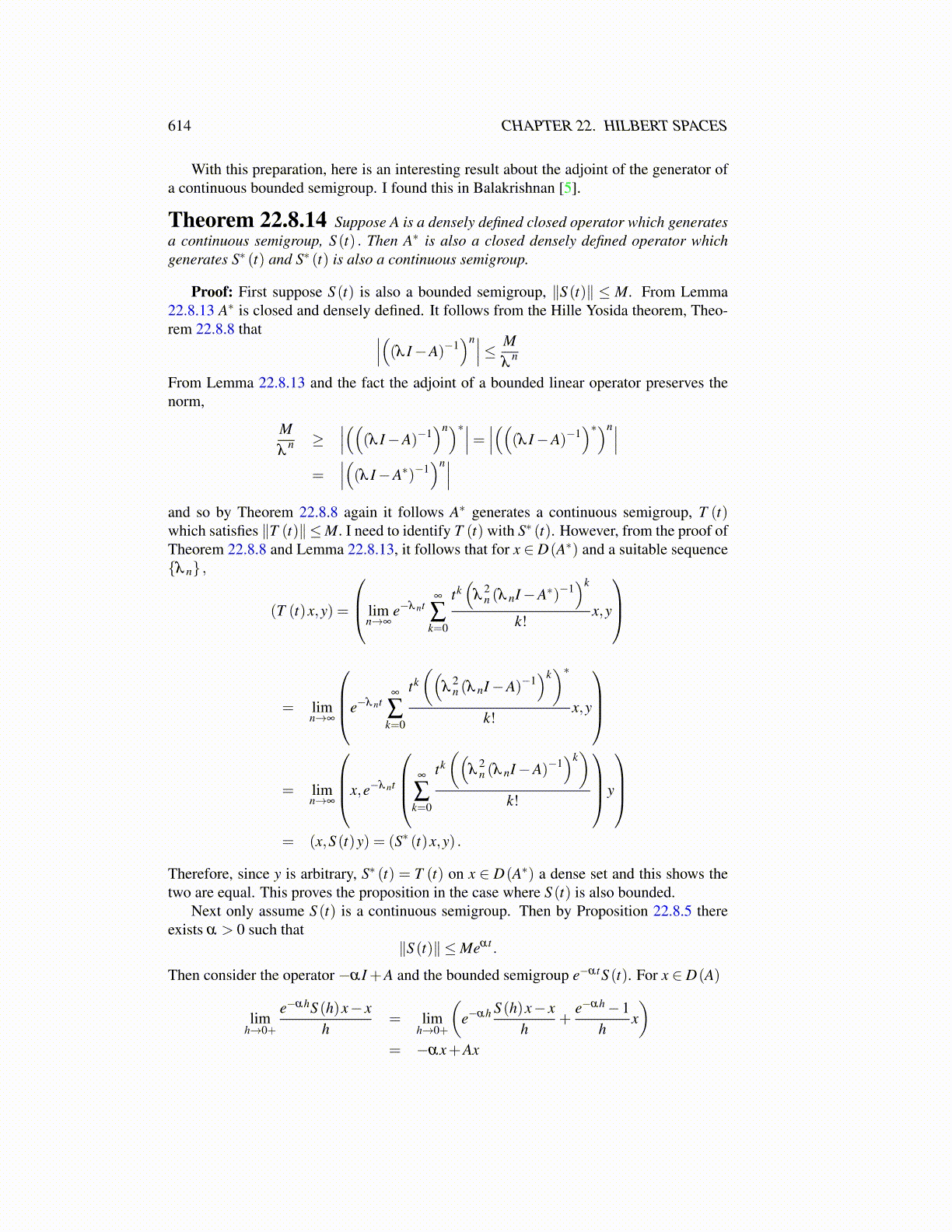
614 CHAPTER 22. HILBERT SPACES
With this preparation, here is an interesting result about the adjoint of the generator ofa continuous bounded semigroup. I found this in Balakrishnan [5].
Theorem 22.8.14 Suppose A is a densely defined closed operator which generatesa continuous semigroup, S (t) . Then A∗ is also a closed densely defined operator whichgenerates S∗ (t) and S∗ (t) is also a continuous semigroup.
Proof: First suppose S (t) is also a bounded semigroup, ∥S (t)∥ ≤ M. From Lemma22.8.13 A∗ is closed and densely defined. It follows from the Hille Yosida theorem, Theo-rem 22.8.8 that ∣∣∣((λ I−A)−1
)n∣∣∣≤ Mλ
n
From Lemma 22.8.13 and the fact the adjoint of a bounded linear operator preserves thenorm,
Mλ
n ≥∣∣∣(((λ I−A)−1
)n)∗∣∣∣= ∣∣∣(((λ I−A)−1)∗)n∣∣∣
=∣∣∣((λ I−A∗)−1
)n∣∣∣and so by Theorem 22.8.8 again it follows A∗ generates a continuous semigroup, T (t)which satisfies ∥T (t)∥ ≤M. I need to identify T (t) with S∗ (t). However, from the proof ofTheorem 22.8.8 and Lemma 22.8.13, it follows that for x ∈ D(A∗) and a suitable sequence{λ n} ,
(T (t)x,y) =
limn→∞
e−λ nt∞
∑k=0
tk(
λ2n (λ nI−A∗)−1
)k
k!x,y
= limn→∞
e−λ nt∞
∑k=0
tk((
λ2n (λ nI−A)−1
)k)∗
k!x,y
= limn→∞
x,e−λ nt
∞
∑k=0
tk((
λ2n (λ nI−A)−1
)k)
k!
y
= (x,S (t)y) = (S∗ (t)x,y) .
Therefore, since y is arbitrary, S∗ (t) = T (t) on x ∈ D(A∗) a dense set and this shows thetwo are equal. This proves the proposition in the case where S (t) is also bounded.
Next only assume S (t) is a continuous semigroup. Then by Proposition 22.8.5 thereexists α > 0 such that
∥S (t)∥ ≤Meαt .
Then consider the operator −αI +A and the bounded semigroup e−αtS (t). For x ∈ D(A)
limh→0+
e−αhS (h)x− xh
= limh→0+
(e−αh S (h)x− x
h+
e−αh−1h
x)
= −αx+Ax